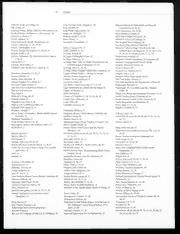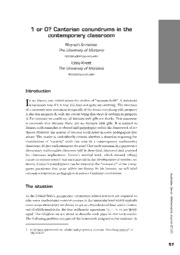
Differential Forms: A Heuristic Introduction PDF
Preview Differential Forms: A Heuristic Introduction
Universitext M. Schreiber Differential Forms A Heuristic Introduction Springer-Verlag New York Heidelberg Berlin M. Schreiber Department of Mathematics The Rockefeller University 1230 York Ave. New York, N.Y. 10021 AMS Subject Classifications: 26-01, 26A57, 26A60, 26A66 Library of Congress Cataloging in Publication Data Schreiber, Morris, 1926- Differential forms. (Universitexl) Bibliography: p. 1. Di 'ferential forms. I. Title. QA381.S4 515'.37 77-14392 All rights reserved. No part of this book may be translated or reproduced in any form without written permission from Springer-Verlag. © 1977 by Springer-Verlag, New York Inc. 9 8 7 6 5 4 3 2 1 ISBN-13: 978-0-387-90287-6 e-ISBN-13: 978-1-4612-9940-0 001: 10.1007/978-1-4612-9940-0 Preface A working knowledge of differential forms so strongly illuminates the calculus and its developments that it ought not be too long delayed in the curriculum. On the other hand, the systematic treatment of differential forms requires an apparatus of topology and algebra which is heavy for beginning undergraduates. Several texts on advanced calculus using differential forms have appeared in recent years. We may cite as representative of the variety of approaches the books of Fleming [2], (1) Nickerson-Spencer-Steenrod [3], and Spivak [6]. . Despite their accommodation to the innocence of their readers, these texts cannot lighten the burden of apparatus exactly because they offer a more or less full measure of the truth at some level of generality in a formally precise exposition. There.is consequently a gap between texts of this type and the traditional advanced calculus. Recently, on the occasion of offering a beginning course of advanced calculus, we undertook the experi- ment of attempting to present the technique of differential forms with minimal apparatus and very few prerequisites. These notes are the result of that experiment. Our exposition is intended to be heuristic and concrete. Roughly speaking, we take a differential form to be a multi-dimensional integrand, such a thing being subject to rules making change-of-variable calculations automatic. The domains of integration (manifolds) are explicitly given "surfaces" in Euclidean space. The differentiation of forms (exterior (1) Numbers in brackets refer to the Bibliography at the end. vi differentiation) is the obvious extension of the differential of functions, and this completes the apparatus. To avoid the geometric and not quite elementary subtleties of a correct proof of the general Stokes formula we offer instead a short plausibility argument which we hope will be found attractive as well as convincing. This is one of several abbreviations we have made in the interests of maintaining an elementary level of exposition. The prerequisite for this text is a standard first course of calculus and a bit more. The latter, though not very specific, may be described as some familiarity with Euclidean space of k dimensions, with k-by-k matrices and the row-by-co1umn rule for mUltiplying them, and with the simpler facts about k-by-k determinants. Serious beginning undergraduates seem generally to possess this equipment at the present time. Linear algebra proper is not required, except at one place in Chapter 6, where we must diagona1ize a real symmetric matrix. For this theorem, and for several other facts of algebra (such as those mentioned above), we offer references to the text [5] of Schreier and Sperner. There the matters in question are well presented without prerequisites. For analytical matters we provide citations to Courant [1]. We have tried to design the text so that, with the books of Courant and Schreier-Sperner as his only other equipment, the industrious reader working alone will find here an essentially self-contained course of study. However, the better use of this text is probably its obvious one as part of a modern sophomore or junior course of advanced calculus. The content of each Chapter is clear from the Table of Contents, with two exceptions: in 6.2 we give the theorem on the geometric and vii arithmetic means, and in 7.3 we prove the isoperimetric inequality. Our notations, all standard, are listed on page (x). The symbol n.m(k) means Formula (k) in Section n.m. It is a pleasure to acknowledge several debts of gratitude: to P.A. Griffiths, who encouraged the project and suggested the inclusion of "something on integral geometry"; to Mary Ellen O'Brien, who gave the manuscript its format in the course of typing it; and to the students, who were willing to participate in an experiment. M. Schreiber 21 July 1977 Table of contents Notations x Chapter 1 Partial Differentiation 1.1 Partial Derivatives 1 1.2 Differentiability, Chain Rule 4 1.3 Taylor's Theorem 9 Chapter 2 Differ~ntial Forms 2.1 Line Integrals 15 2.2 One Forms 19 2.3 Wedge Product 22 2.4 Change of Coordinates 30 Chapter 3 Integration in Higher Dimensions 3.1 Jacobians 37 3.2 Implicit Function Theorem 48 3.3 Manifolds 59 3.4 Integration on Manifolds 67 Chapter 4 Exterior Differentiation 4.2 Exterior Derivative 74 4.2 Fundamental Theorem of Calculus 81 4.3 Closed Forms 89 4.4 Exact Forms 93 Chapter 5 Vector Operations in lR? 5.1 Nabla 97 5.2 Higher Derivatives 104 5.3 Integral Formulae 111 Chapter 6 Extremals 6.1 Generic Extremals 117 6.2 Extremals with Constraints 122 Chapter 7 Integral Geometry 7.1 Measure of Points and Lines 126 7.2 Kinematic ~~asure 130 7.3 Formulae of Poincare and Blaschke 133 Appendix 1. The Volume Element on a Manifold 140 2. The Algebra of Forms 144 3. A Remark on Curl Curl 145 Bibliography 147 Notations aE:A a is a member of the set A -+ x a vector -+ II~ " the length of x -+ -+ the scalar product of x and y -+ -+ -+ -+ xxy the vector product of x and y n! the binomial coefficient (n) k (n-k) ! k! lR the set of real numbers Euclidean space of dimension k m-vector-valued function of an n-vector argument z (<P) the set of zeros of <p:]R.k -+]R.l fog the composition f 0 g(x) = (f(g(x» of functions f and g WAT the wedge product of different-ial forms wand T the space of r-forms w the set of vector fields the set of scalar fields the determinant of the matrix T the transpose of the matrix T trT the trace of the matrix T Chapter 1 Partial differentiation 1.1 Partial Derivatives We denote by ~k the set of real ordered k-tup1es Such a k-tup1e is called a k-vector, the numbers being its components. k-vectors are added and multiplied by scalars in the component-wise function familiar in the plane and in three-space. In this notation the plane and three-space are denoted R2 and R 3 respectively. The inner (or scalar) product x-+ ·y-+ = l: of k-vectors x-+ xiYi and Y-+ determines length and angle in Rk as follows. The length II~I of x-+ is II~I = /fx:·ix , and the angle e between x-+ and Y-+ is defined by the relation (law of Cosines) Cos e = i·Y/II~1 ·IIYlI . These are exact analogs for Rk. of the corresponding constructions -+ ..,k in JR2 and R3. In particular, xe:..n is called a unit vector if II~I =1 , and k-vectors -X+,-Y+ are orthogonal if o . A function of n variables may be viewed as a function of an n-vector argument or variable. We shall be concerned also with functions taking vector values. The notation signifies that f is a function of an n-vector argument taking m-vector values. Since 2 a l-vector is just a number, a function is a scalar- valued function of n variables. Take as orthogonal reference frame in ~k the unit vectors e-)-1 (1,0 •••.• 0). -e)-2 = (0.1.0 ••••• 0) •.••• -~)- = (0 ••..• 0.1). The lines on which they lie are then a system of axes for a Cartesian coor- dinate system in ~k Every point has a unique expression in this reference frame. its Cartesian coordinates in this frame being (xl.x2' •••• ~). To each coordinate direction is asso- o ciated a partial differential operator which acts upon oX i • scalar-valued functions of a vector argument thus: f(~+ 0;.) - f(~) [-0d - fJ (x-)-) lim ______~ 1.~ _____ _ (1) x. 1. o~ _0_ Note well that the result of applying the operator oX to a function i is another function [_d_ f) : ~k -)-~l of the same type. ox. 1. We will denote this new function, whenever possible, by the short nota- tion Thus o f. (;t) [ox. f](x) (2) 1. 1. and fi is called the ith partial derivative of f. Its geometric k 1 significance is as follows. Given f : JR -)-~ • we may interpret the equation z = f(x-)-) (3)
Description:The list of books you might like

Can’t Hurt Me: Master Your Mind and Defy the Odds

The 5 Second Rule: Transform your Life, Work, and Confidence with Everyday Courage

The Strength In Our Scars

Credence

Ram Accelerators: Proceedings of the Third International Workshop on Ram Accelerators Held in Sendai, Japan, 16–18 July 1997

Burgen und Schlösser Natur aktiv Tag der Franken

COMESA 223: Hard-drawn aluminium wire for overhead line conductors

Multifunctional Pharmaceutical Nanocarriers

The Selwyn Review 2006-2007
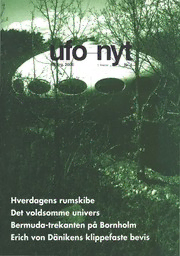
UFO Nyt No 1 2006

Systematics, Historical Biogeography and Ecological Phylogenetics in a clade of water striders
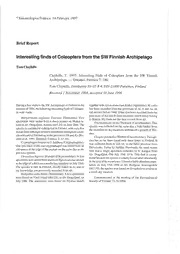
Interesting finds of Coleoptera from the SW Finnish Archipelago
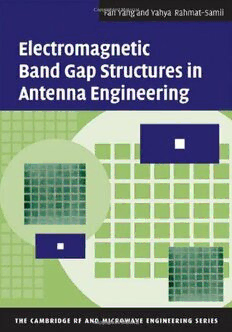
Electromagnetic Band Gap Structures in Antenna Engineering

Operations Research Letters 1993: Vol 14 Index
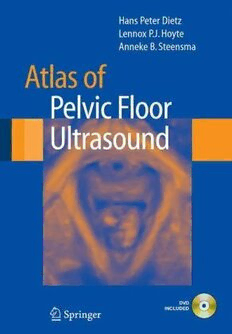
Atlas of Functional Neuroanatomy

Archives of Disease in Childhood 1993: Vol 69 Index
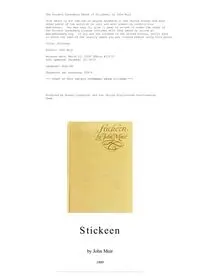
Stickeen by John Muir
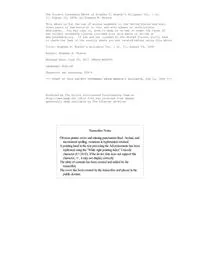
Stephen H Branchs Alligator Vol I no 17 August 14 1858 by Stephen H Branch

Cecilia of the Pink Rosesby Katharine Haviland Taylor

St Augustine Floridas Colonial Capital by J T van Campen

St Nicholas Vol 5 No 3 by Various

